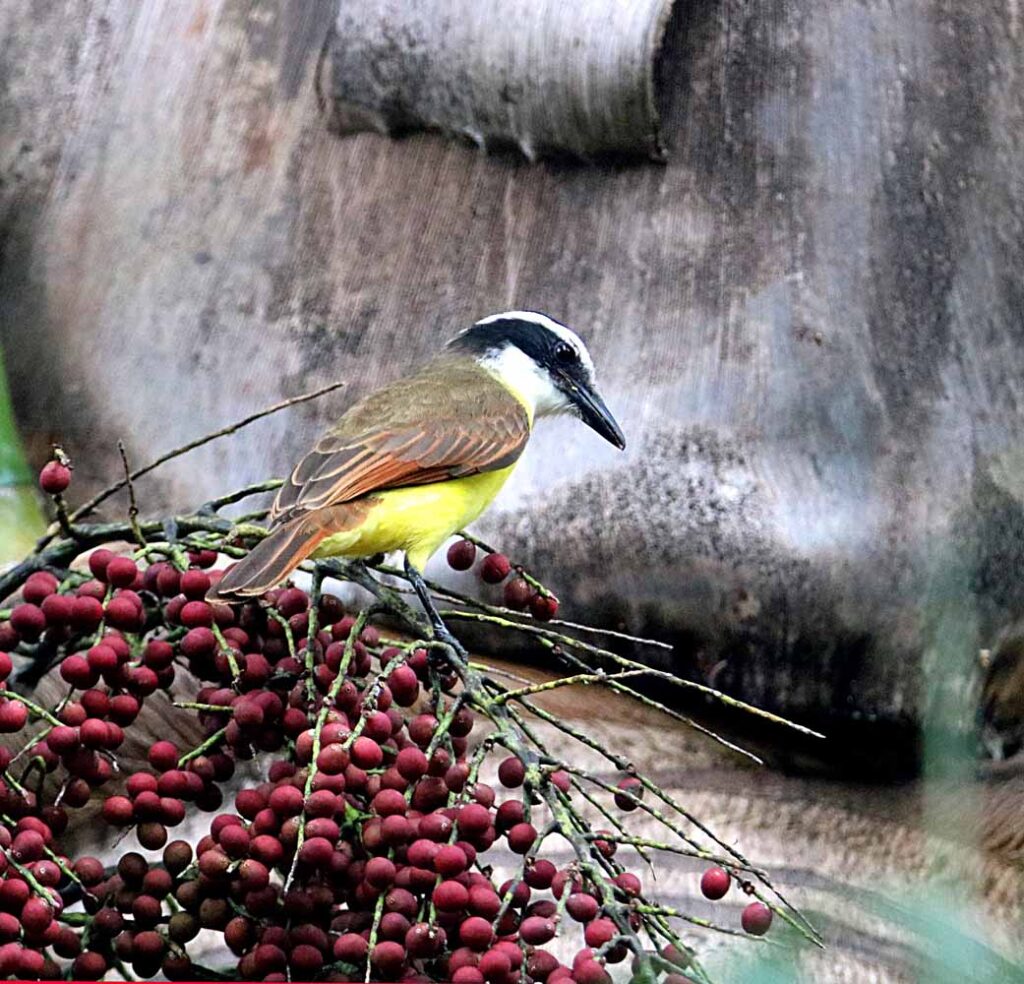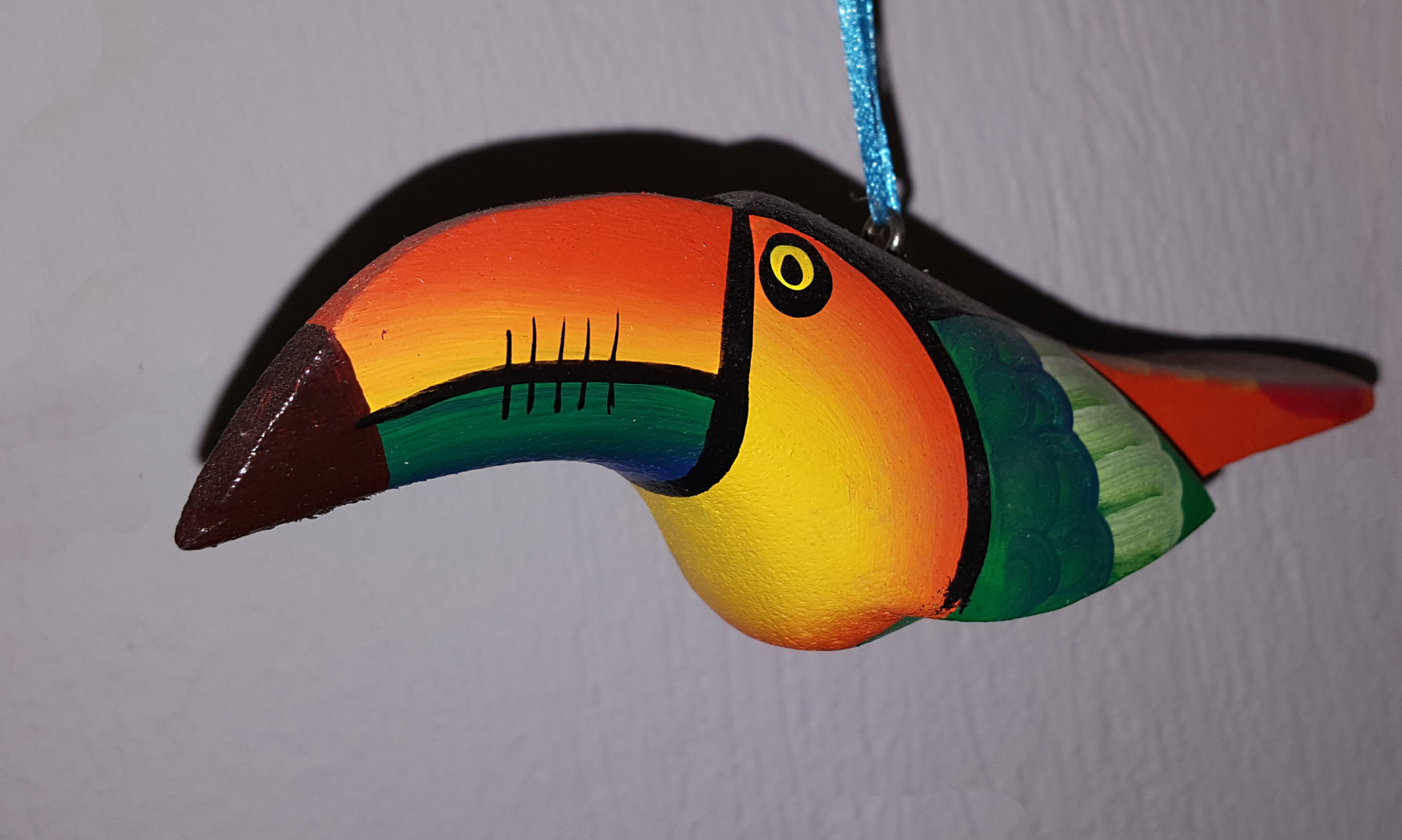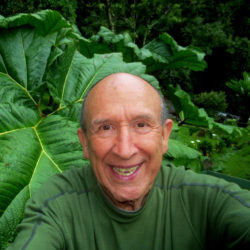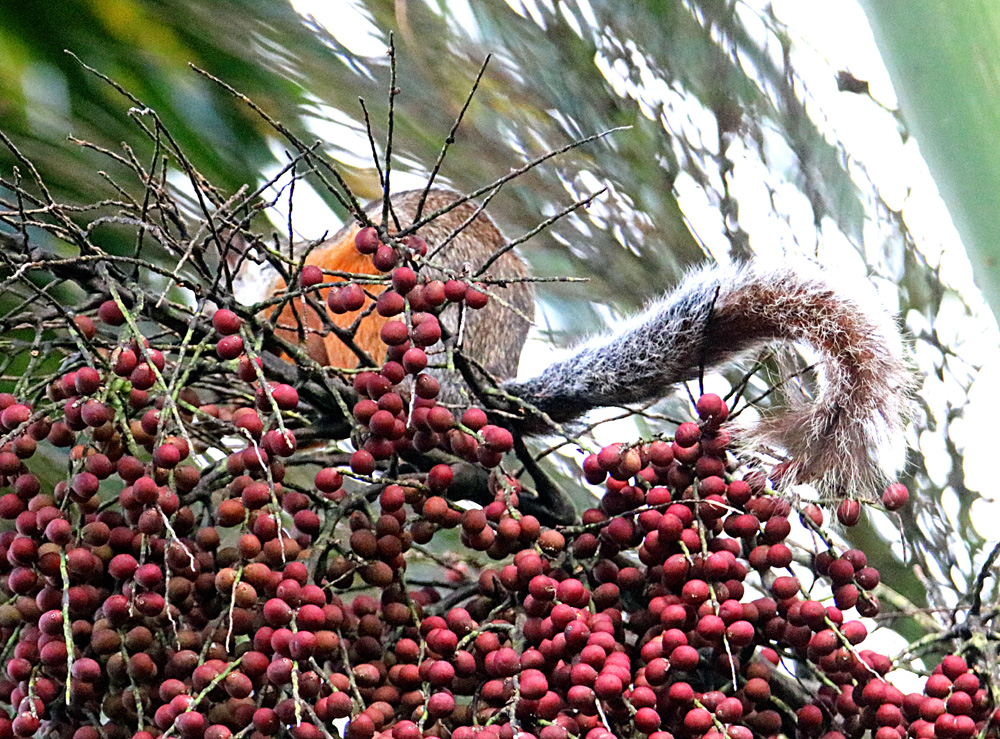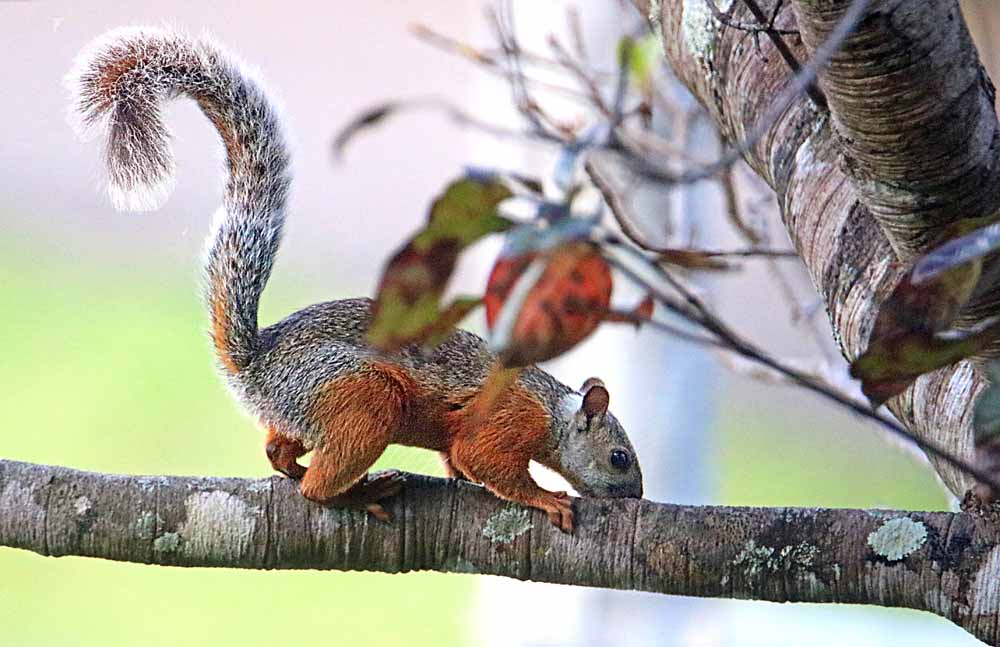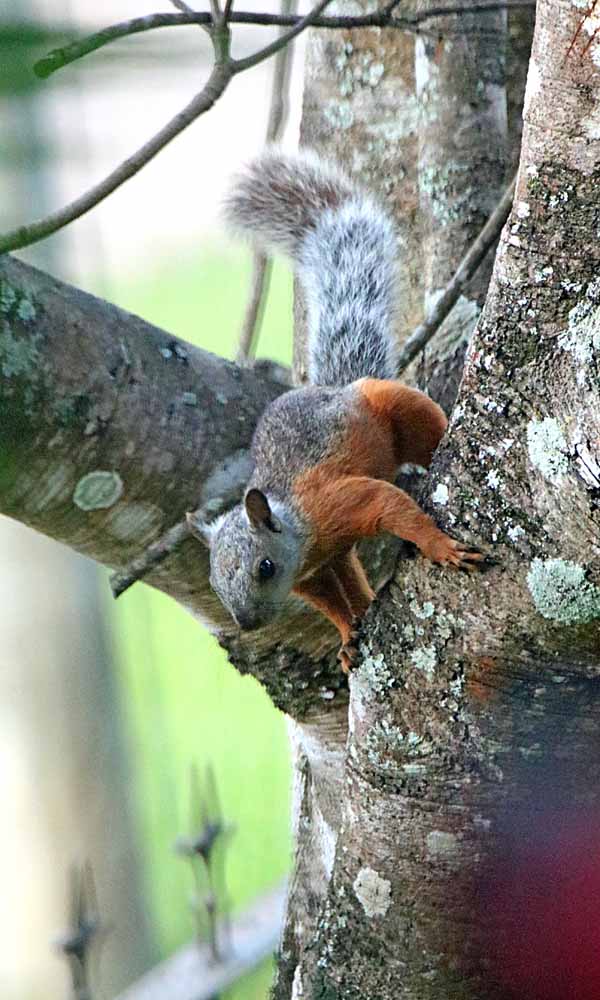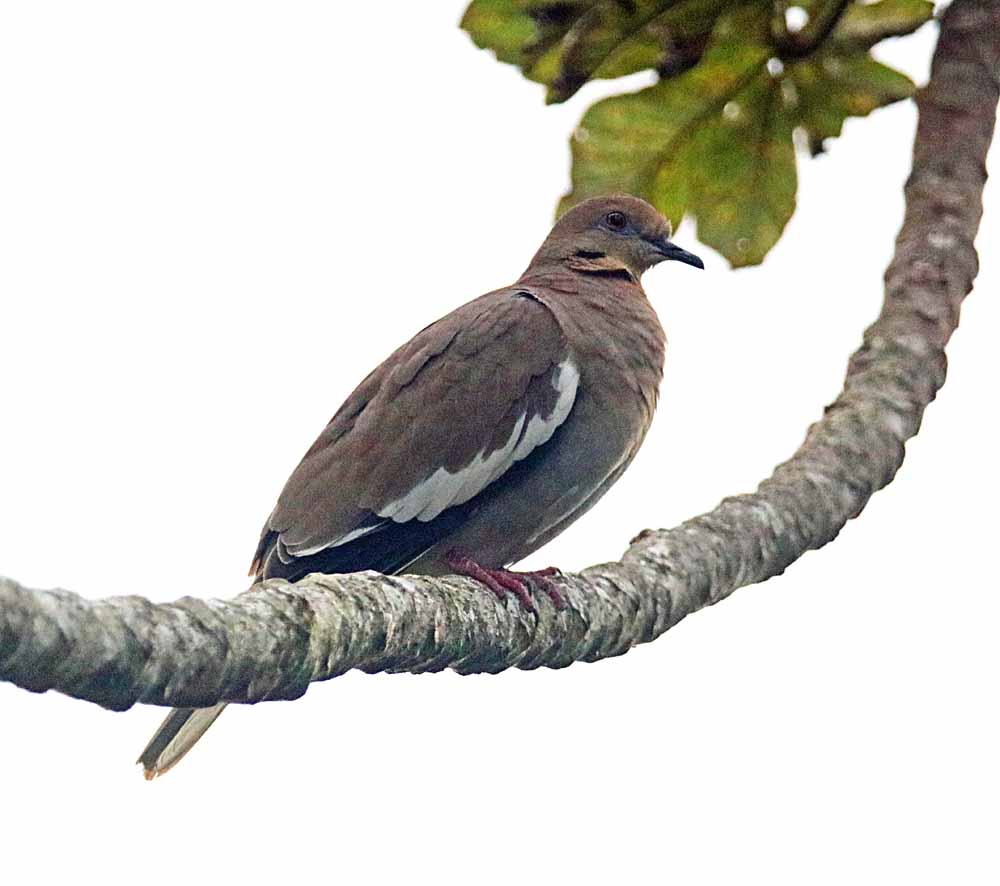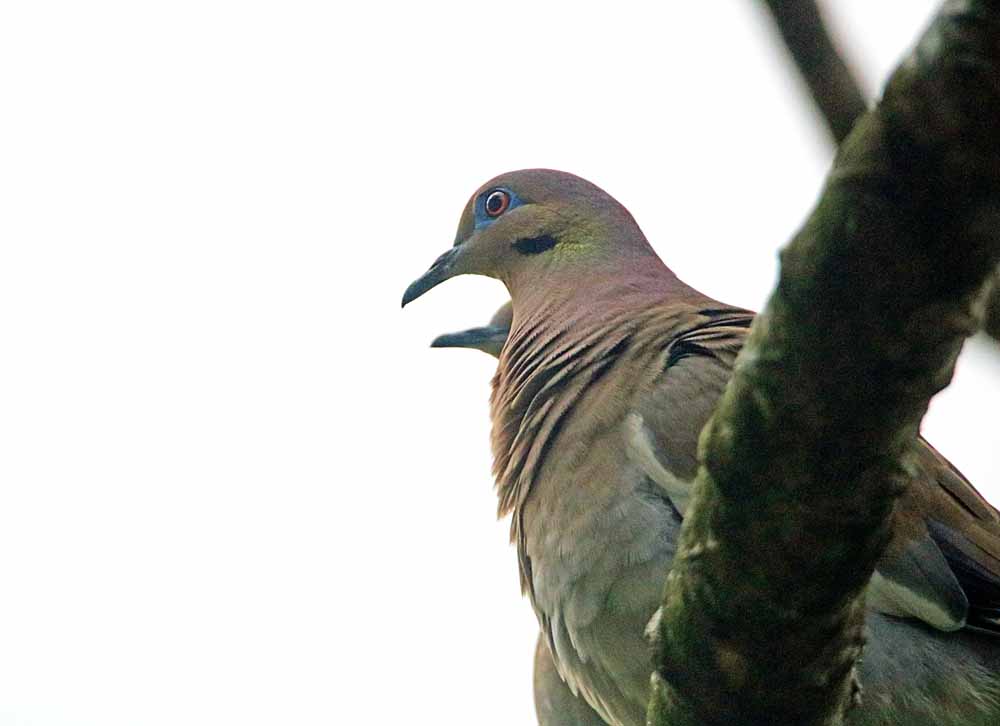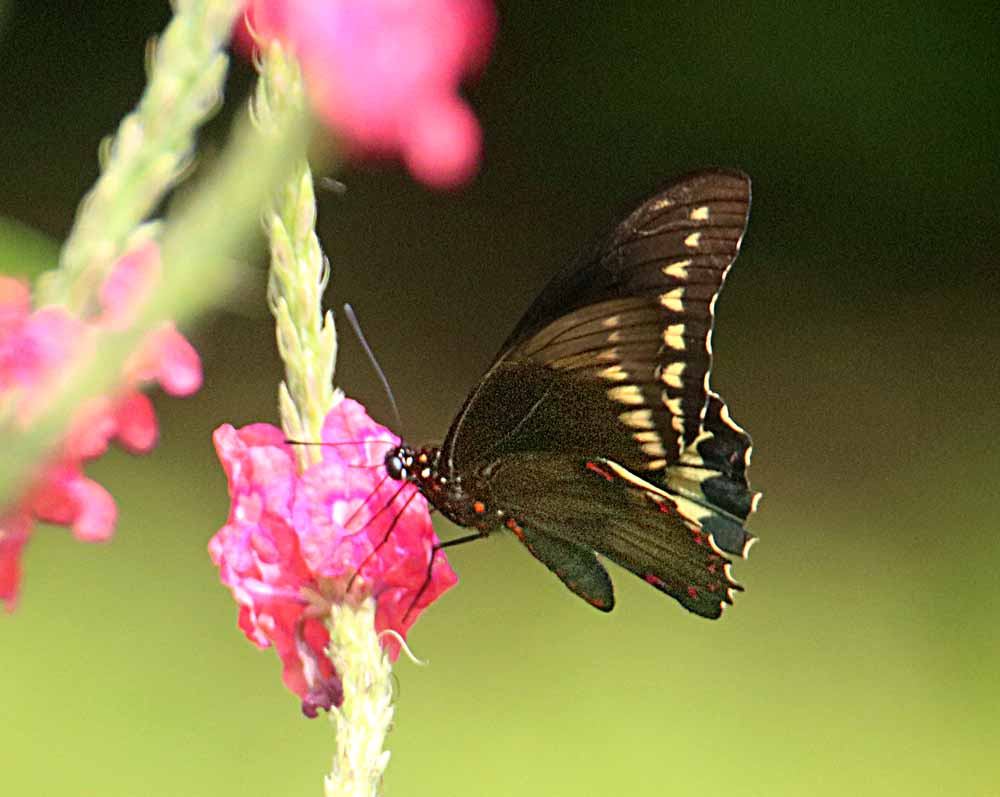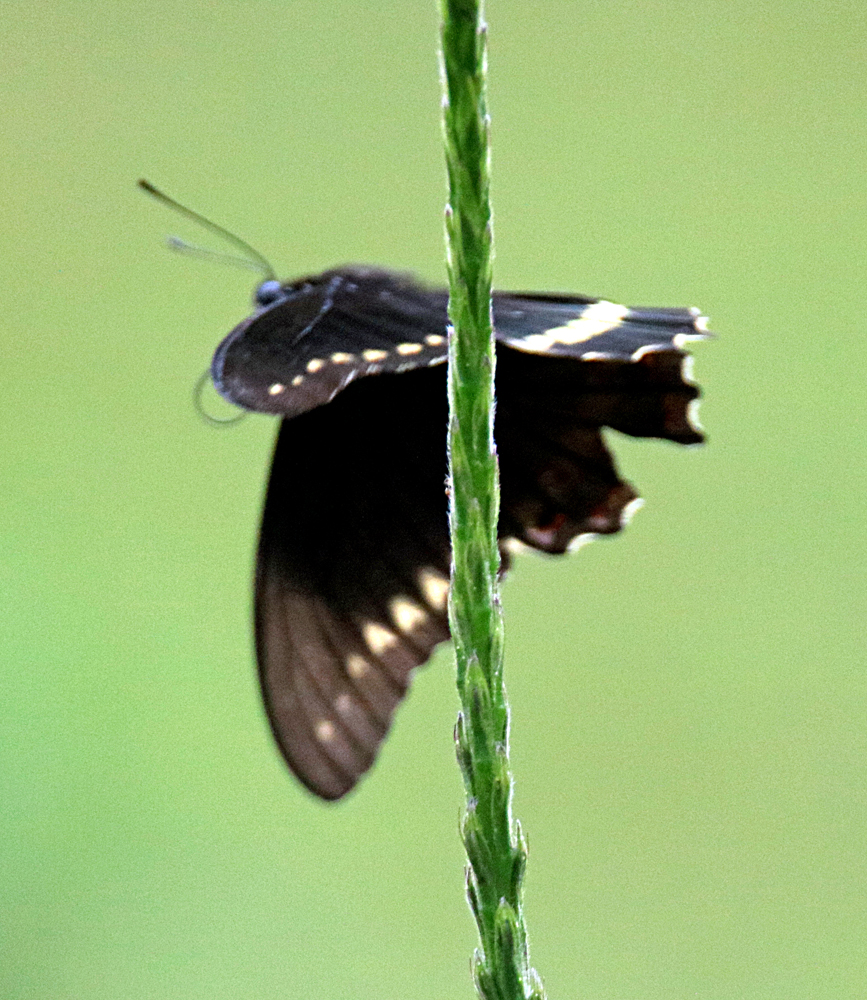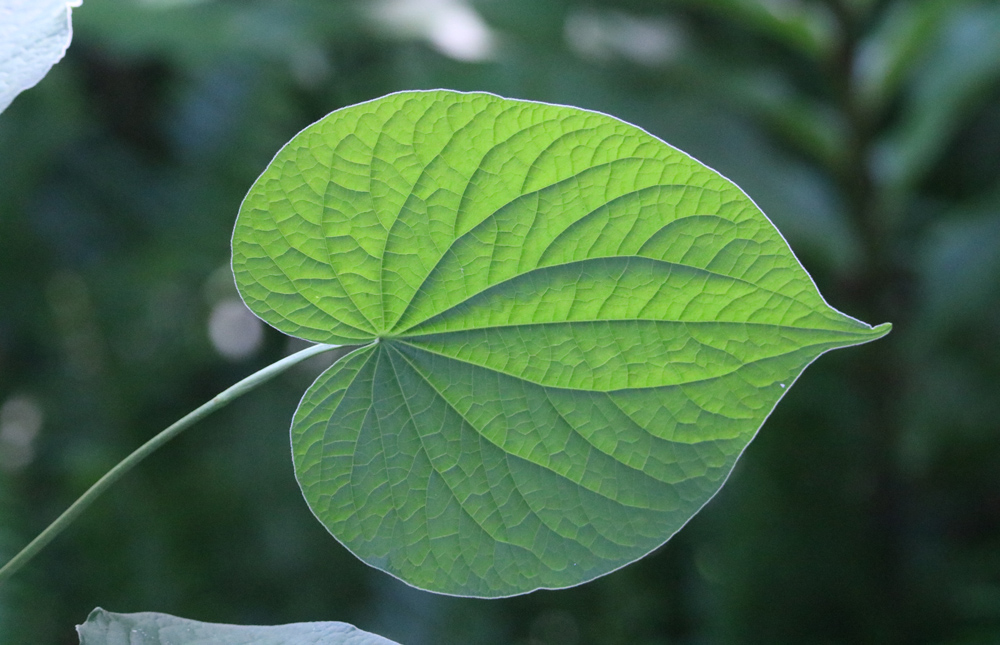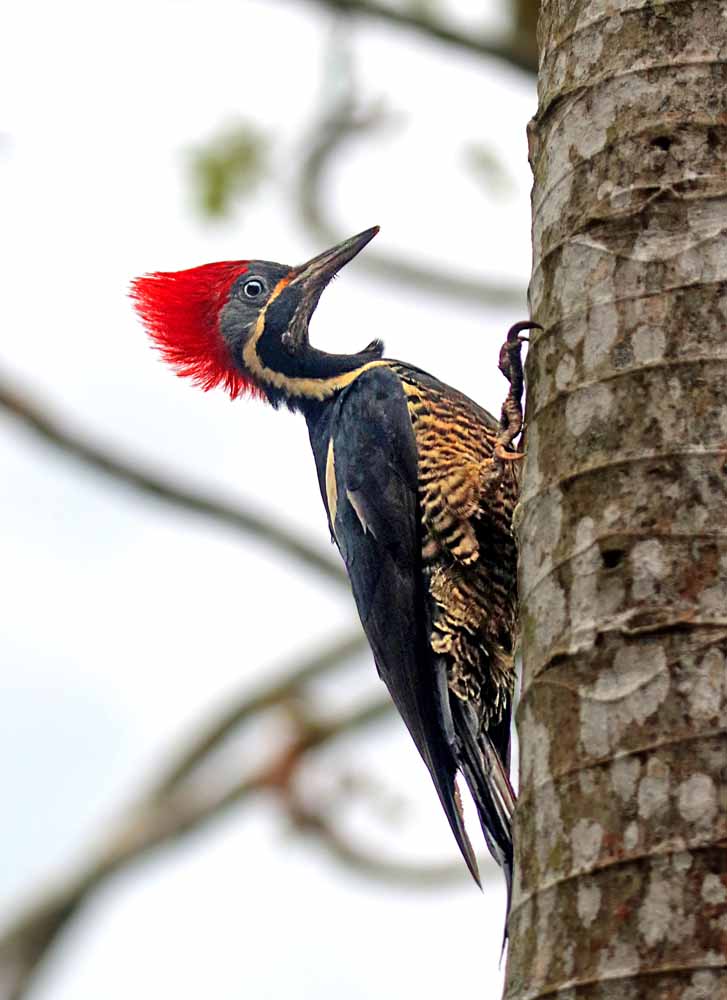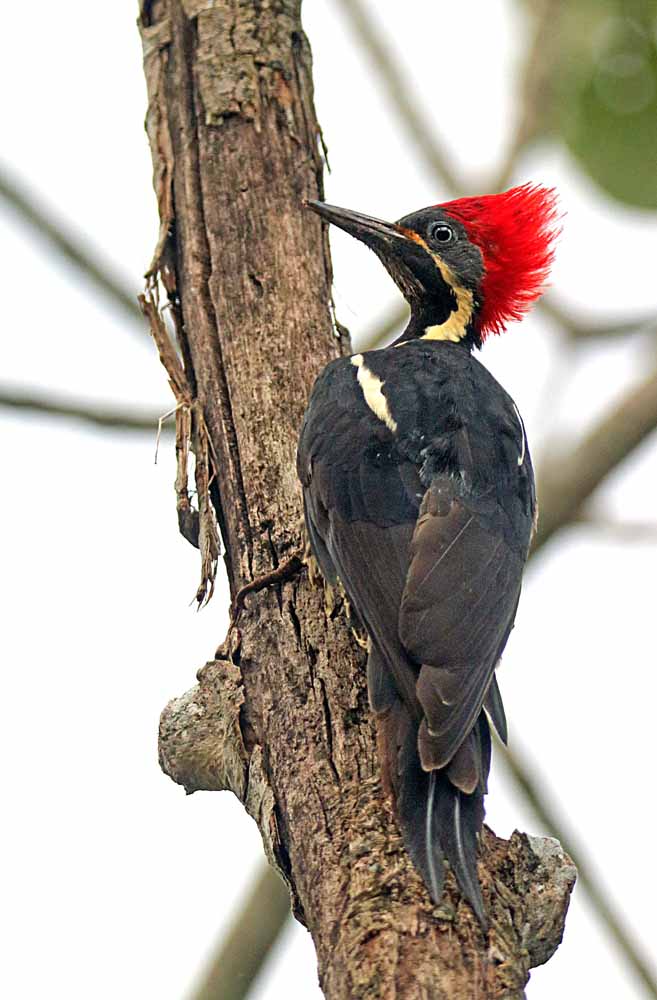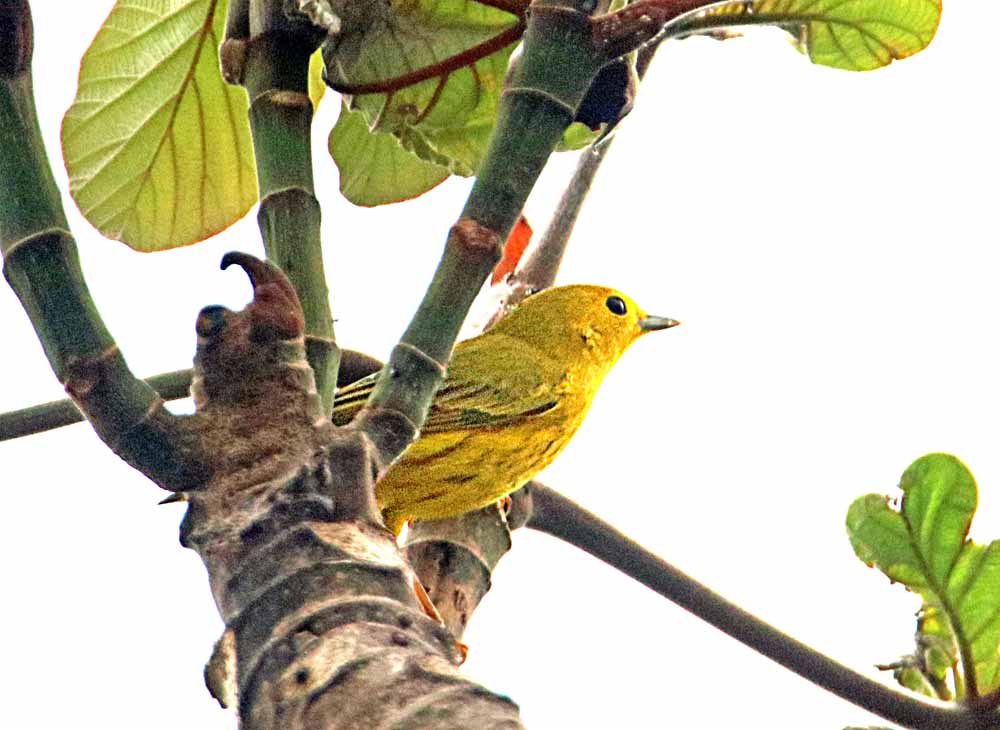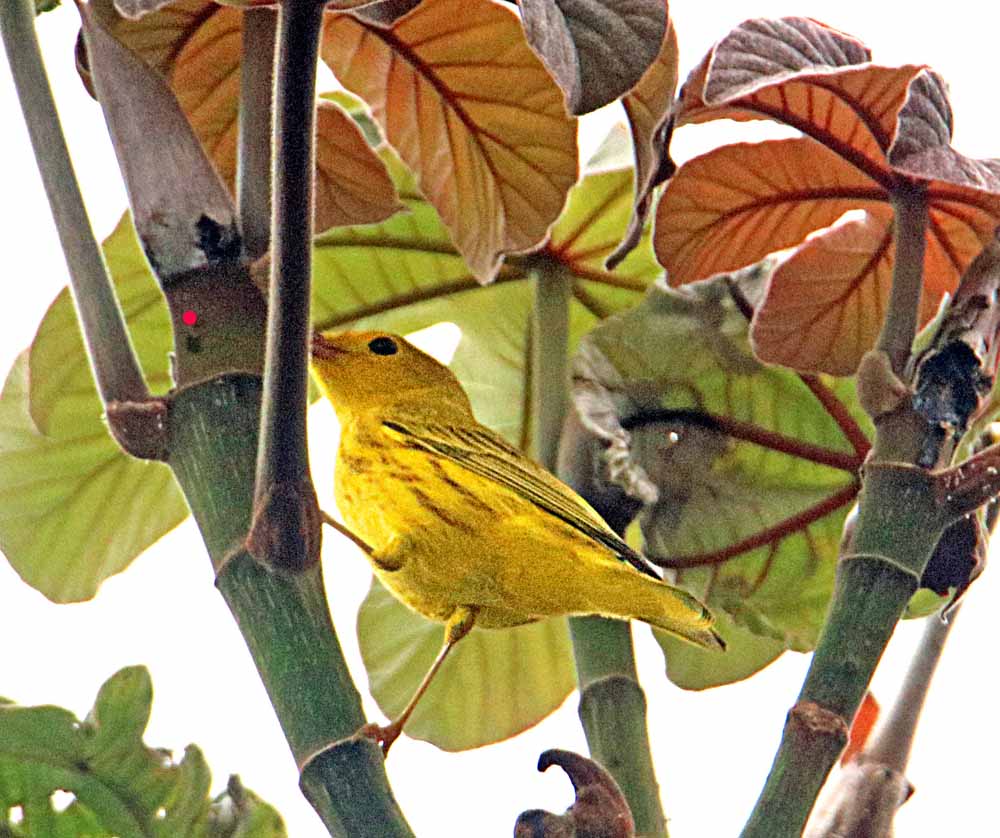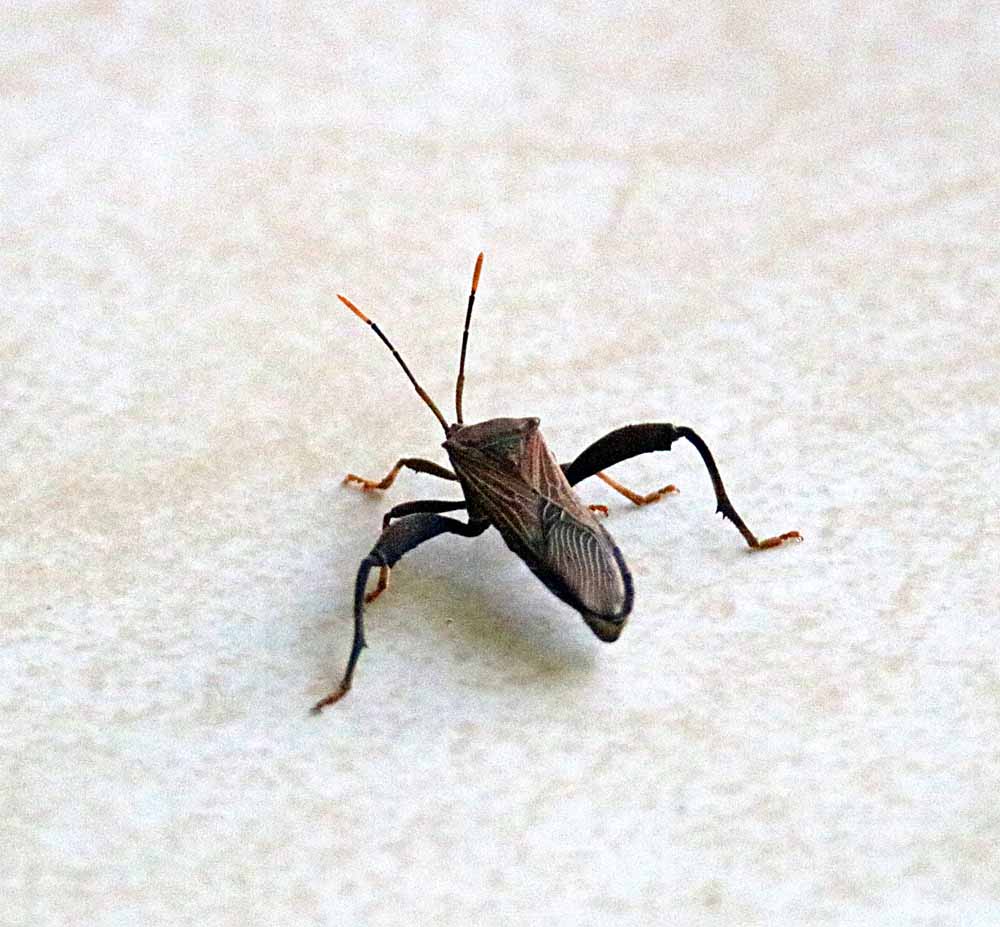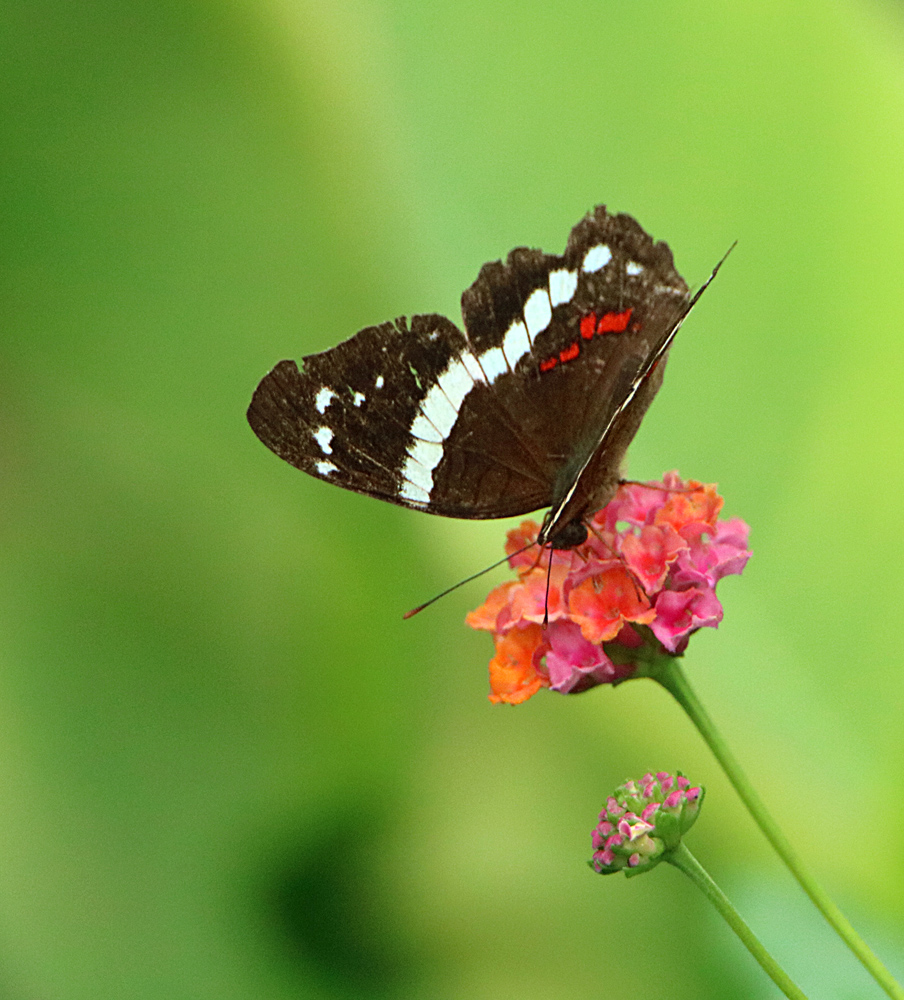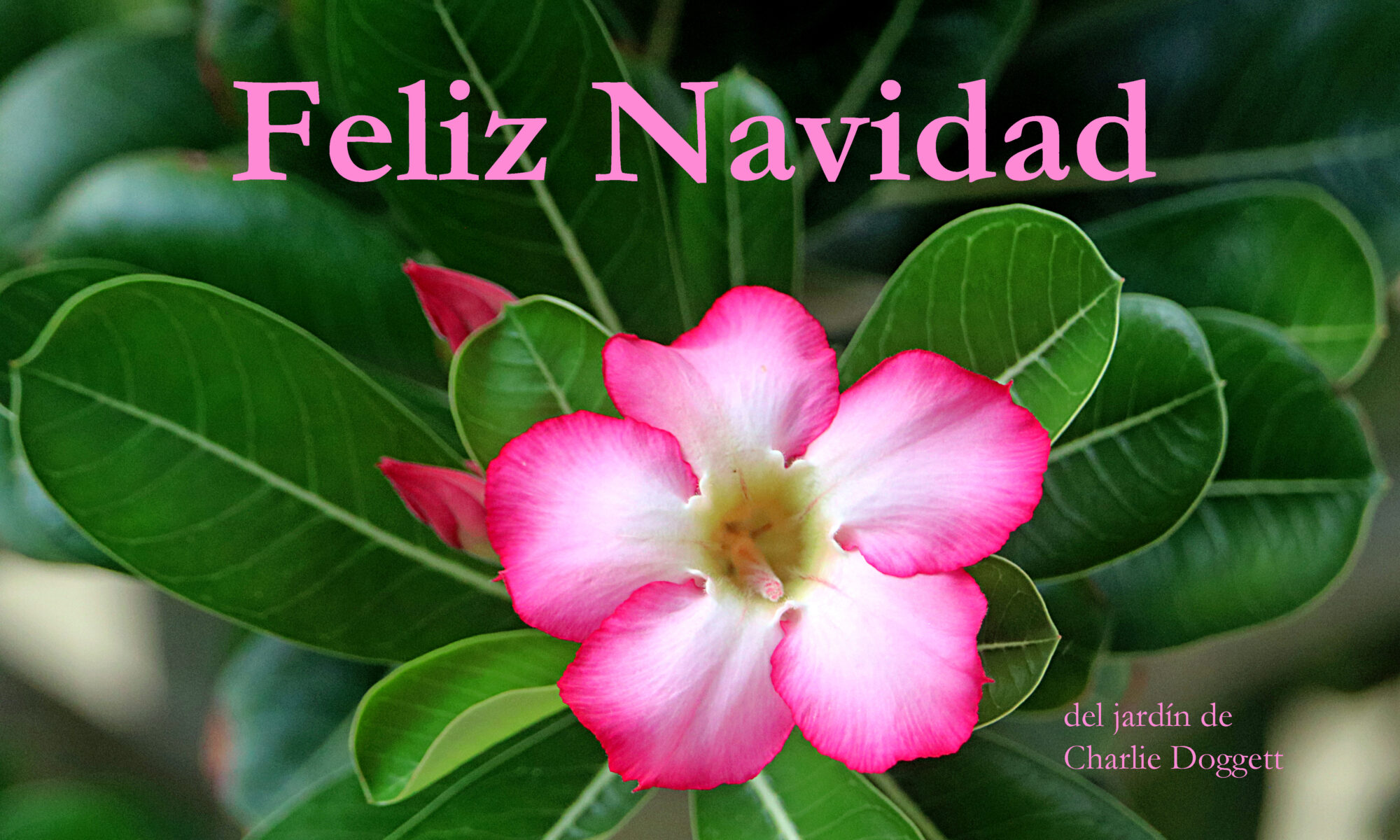That big bunch of green palm berries in my October 25 post turned red in November and multiple creatures began to eat with the Chachalacas and Boat-billed Flycatchers the most possessive. Below this introductory photo is a gallery showing the “pecking order” for these particular palm berries when I was out to see it. Note that I never saw the iguanas eating them (though they do eat the Nance Berries) but that doesn’t mean they didn’t partake, I just never got a photo. And they would possibly be some competition to the Chachalacas, though those birds stay in families or flocks outnumbering others, as well as being the largest. 🙂
